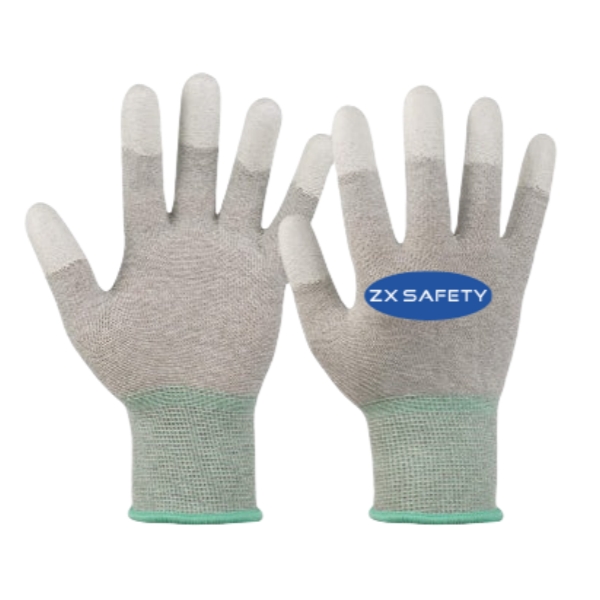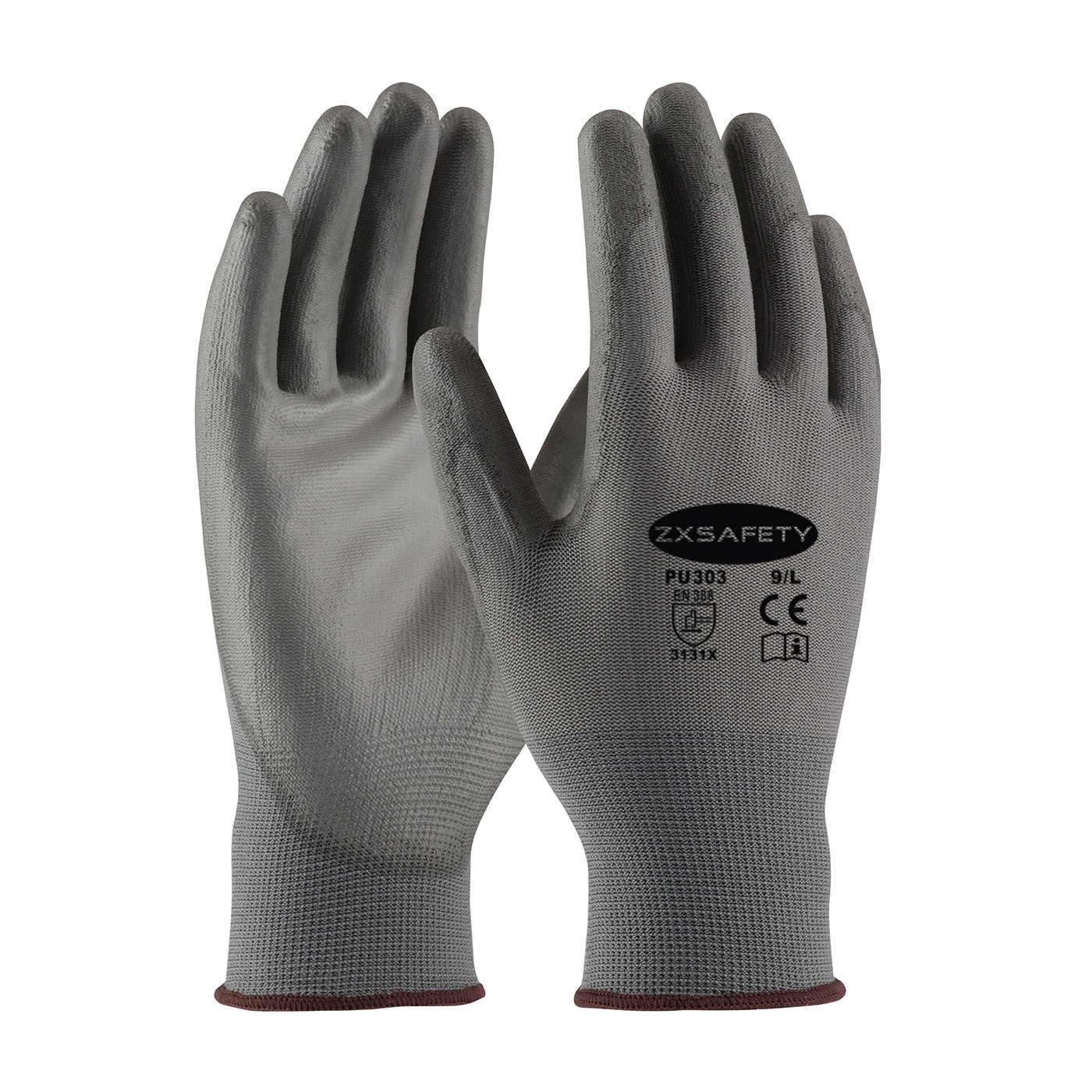ESD Carbon Gloves are anti-static gloves primarily used in environments that require electrostatic discharge (ESD) protection, such as electronic manufacturing and repair. Here is a detailed introduction to ESD Carbon Gloves:
Material and Structure
- Main Material: Typically made from nylon or polyester woven with conductive carbon fibers. For example, some gloves are made from 13-gauge nylon and conductive carbon fibers.
- Coating: The fingertips and palm areas of some gloves are coated with polyurethane (PU) to provide better grip.
Anti-Static Performance
- Surface Resistivity: Generally ranges from 10^6 to 10^9 Ω. This resistivity range allows the gloves to effectively dissipate static electricity, preventing electrostatic discharge from damaging sensitive electronic equipment.
Features and Advantages
- Lint-Free: Designed to be lint-free to avoid contamination in clean environments.
- Breathability and Comfort: The knitted structure provides good breathability and elasticity, making them comfortable to wear.
- Grip Performance: The PU coating on the fingertips and palm offers excellent grip, suitable for precise operations.
- Durability: The material is durable, capable of withstanding daily wear and tear.
Applicable Scenarios
- Electronics Industry: Used in semiconductor manufacturing, precision electronic assembly, and testing processes. The gloves’ anti-static function and fine operation capabilities ensure the safety of electronic components and equipment.
- Clean Room Environments: Suitable for use in clean rooms with a class of 1000 to 10000.
- Other Industries: Such as the production and maintenance of automotive electronic devices, and the assembly and maintenance of aerospace electronic equipment.
ESD Carbon Gloves are an ideal choice for environments that require strict electrostatic control, effectively reducing the risk of electrostatic discharge and improving production safety and efficiency.


